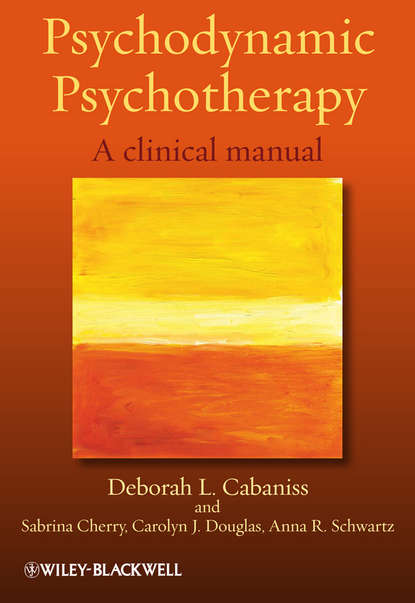
Psychodynamic Psychotherapy скачать fb2
Deborah L. Cabaniss - Psychodynamic Psychotherapy краткое содержание
Psychodynamic psychotherapy offers people a chance to create new ways of thinking and behaving in order to improve the quality of their lives. This book offers a practical, step-by-step guide to the technique of psychodynamic psychotherapy, with instruction on listening, reflecting, and intervening. It will systematically take the reader from evaluation to termination using straightforward language and carefully annotated examples. Written by experienced educators and based on a tried and tested syllabus, this book provides clinically relevant and accessible aspects of theories of treatment processes. The workbook style exercises in this book allow readers to practice what they learn in each section and more “actively” learn as they read the book. This book will teach you: About psychodynamic psychotherapy and some of the ways it is hypothesized to work How to evaluate patients for psychodynamic psychotherapy, including assessment of ego function and defenses The essentials for beginning the treatment, including fostering the therapeutic alliance, setting the frame, and setting goals A systematic way for listening to patients, reflecting on what you've heard, and making choices about how and what to say How to apply the Listen/Reflect/Intervene method to the essential elements of psychodynamic technique How these techniques are used to address problems with self esteem, relationships with others, characteristic ways of adapting, and other ego functions Ways in which technique shifts over time This book presents complex concepts in a clear way that will be approachable for all readers. It is an invaluable guide for psychiatry residents, psychology students, and social work students, but also offers practicing clinicians in these areas a new way to think about psychodynamic psychotherapy. The practical approach and guided exercises make this an exceptional tool for psychotherapy educators teaching all levels of learners. This book includes a companion website: www.wiley.com/go/cabaniss/psychotherapy with the «Listening Exercise» for Chapter 16 (Learning to Listen). This is a short recording that will help the reader to learn about different ways we listen. Praise for Psychodynamic Psychotherapy: A Clinical Manual «This book has a more practical, hands-on, active learning approach than existing books on psychodynamic therapy.» Bob Bornstein, co-editor of Principles of Psychotherapy; Adelphi University, NY «Well-written, concise and crystal clear for any clinician who wishes to understand and practice psychodynamic psychotherapy. Full of real-world clinical vignettes, jargon-free and useful in understanding how to assess, introduce and begin psychotherapy with a patient. Extraordinarily practical with numerous examples of how to listen to and talk with patients while retaining a sophistication about the complexity of the therapeutic interaction. My trainees have said that this book finally allowed them to understand what psychodynamic psychotherapy is all about!» —Debra Katz, Vice Chair for Education at the University of Kentucky and Director of Psychiatry Residency Training «This volume offers a comprehensive learning guide for psychodynamic psychotherapy training.» —Robert Glick, Professor, Columbia University
Чтобы оставить свою оценку и/или комментарий, Вам нужно войти под своей учетной записью или зарегистрироваться





